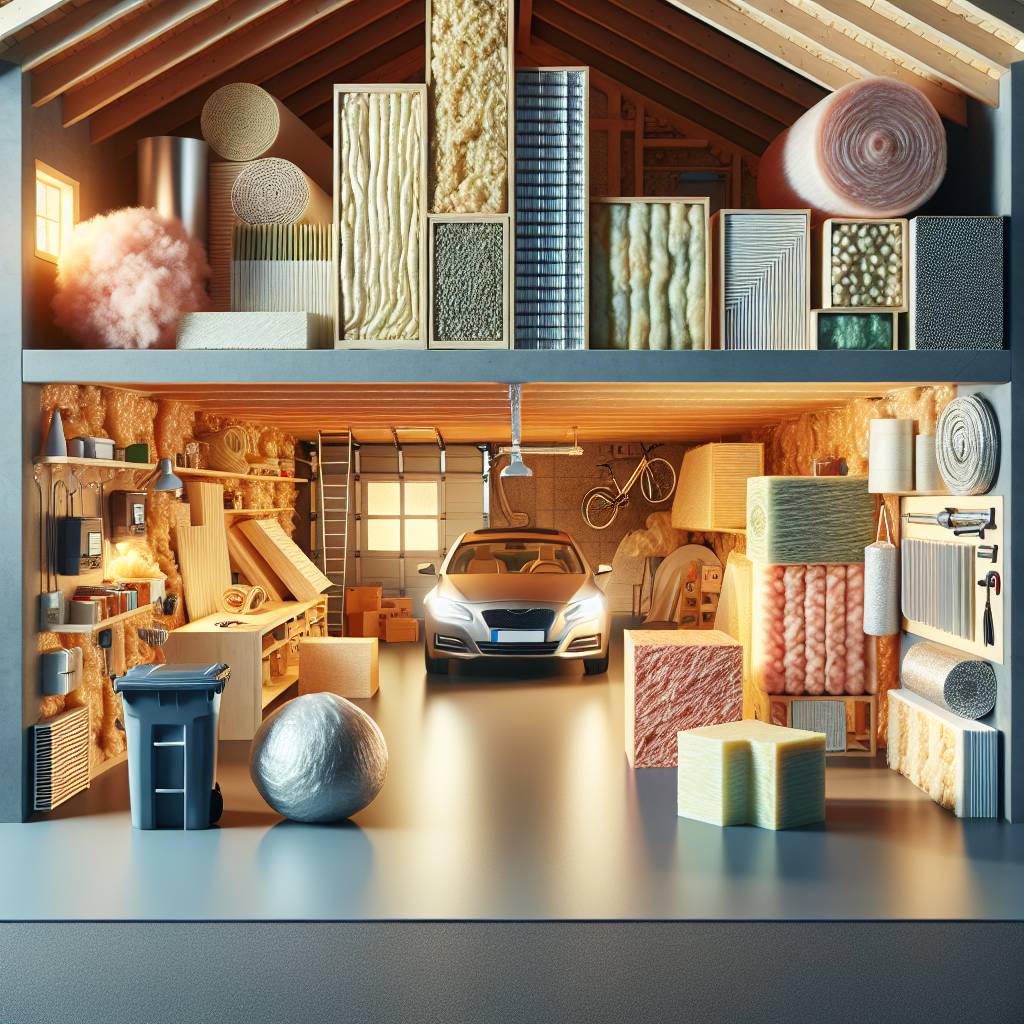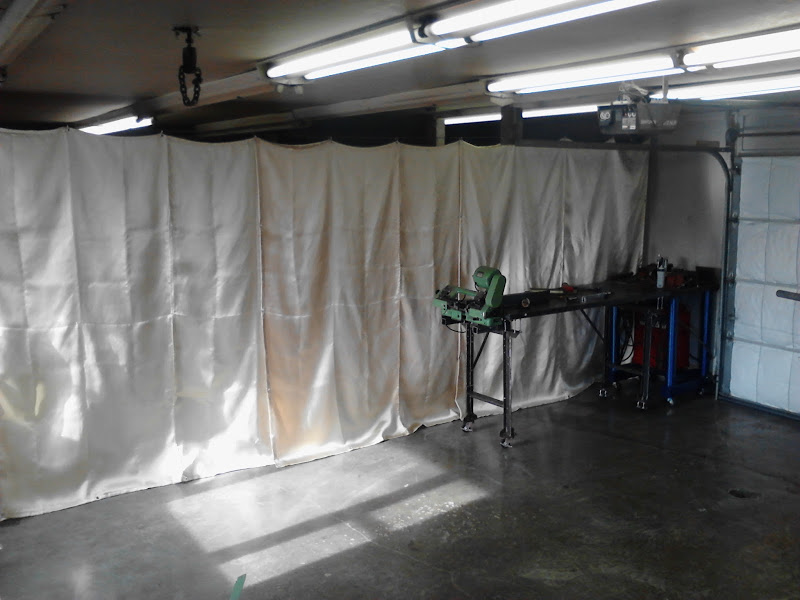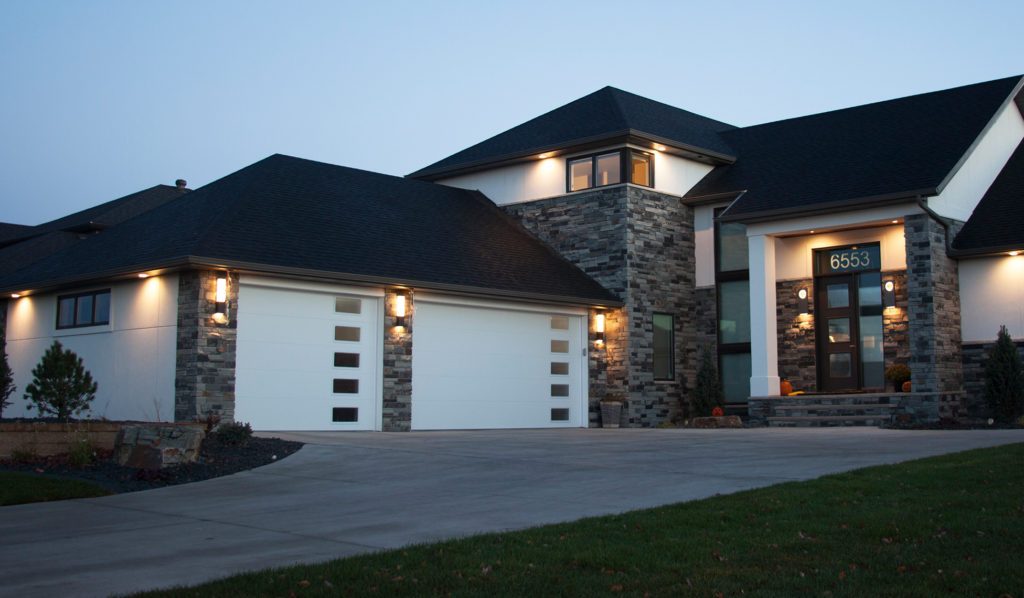Did you know that the average American household spends about $2,000 annually on energy bills, with a significant portion wasted due to poor insulation in the attic? By upgrading to green insulation materials for your garage, not only can you reduce energy costs, but you can also contribute to a healthier environment. These eco-friendly options, such as recycled denim or cellulose insulation, provide effective thermal regulation while minimizing your carbon footprint. With easy installation and long-lasting benefits, green insulation is a smart choice for any homeowner looking to improve energy efficiency and sustainability. Discover how these innovative materials can transform your garage into a more comfortable and eco-conscious space.
Key Takeaways
- Choose eco-friendly insulation materials like recycled denim or sheep’s wool for a sustainable garage upgrade.
- Prioritize effectiveness and longevity when selecting insulation to ensure lasting energy efficiency.
- Follow proper installation techniques to maximize the benefits of green insulation in your garage.
- Understand the cost considerations of different green insulation materials and weigh them against long-term savings on energy bills.
- Opting for green insulation not only benefits the environment but also improves the comfort and energy efficiency of your garage.
- Make an informed decision by considering the popularity, benefits, and costs of various green insulation materials available in the market.
Understanding Eco-Friendly Insulation
What Makes It Green
Insulation with high R-values effectively retains heat, ensuring energy efficiency in your garage. Opt for materials produced through environmentally friendly processes to reduce carbon footprint. Prioritize insulation that is non-toxic and recyclable, promoting sustainability.
Key Benefits
Improved indoor air quality is a key benefit of eco-friendly insulation, creating a healthier environment. By using renewable or recycled materials, you can significantly reduce environmental impact. Quality environmentally friendly insulation can also enhance property value, appealing to eco-conscious buyers.
Where to Insulate
Insulate walls, ceilings, and floors to maximize energy efficiency and maintain consistent temperatures. Consider insulating garage doors to prevent heat loss and improve insulation performance. Insulating attics and crawl spaces is crucial for overall energy conservation and reducing heating costs.
Choosing the Right Material
Sustainable Options
Cellulose insulation, derived from recycled newsprint, offers a sustainable choice for garage insulation. This material effectively reduces heat loss and is environmentally friendly. Denim insulation, made from natural fibers, provides excellent thermal performance while being renewable and safe to handle. Fiberglass insulation, known for its durability and effectiveness in temperature control, is another sustainable option to consider.
When comparing eco-friendly materials, it’s essential to weigh the benefits of cellulose, denim, and fiberglass insulation. Cellulose insulation stands out for its recycled content and energy efficiency. Denim insulation excels in sound absorption and moisture resistance. Fiberglass insulation is prized for its fire resistance and cost-effectiveness.
- Pros of spray foam insulation:
- Excellent thermal performance
- Air sealing properties
- Versatile application options
- Cons of spray foam insulation:
- Higher initial cost
- Potential off-gassing during installation
- Requires professional installation for optimal results
To evaluate the sustainability of various materials, consider wool, cotton, recycled plastic, and plant-based foams. Wool insulation provides natural fire resistance and moisture management. Cotton insulation offers biodegradability and low VOC emissions. Recycled plastic insulation contributes to waste reduction and energy savings. Plant-based foams are renewable resources that enhance indoor air quality.
- Benefits of Cellulose Insulation:
- Recycled content
- Energy efficiency
- Environmentally friendly
- Benefits of Denim Insulation:
- Sound absorption
- Moisture resistance
- Renewable properties
- Benefits of Fiberglass Insulation:
- Fire resistance
- Cost-effectiveness
- Durability
- Sustainability Factors to Consider:
- Waste reduction with recycled plastic
- Indoor air quality improvement with plant-based foams
Installing Green Insulation in Your Garage
Steps for Proper Insulation
To ensure effective insulation, clean and prepare the area meticulously before installing any green insulation materials. This step is crucial as it helps the insulation adhere properly.
Next, accurately measure and cut the insulation materials to fit the dimensions of your garage walls or ceiling. Precision is key to achieving optimal insulation performance.
Sealing gaps and cracks is essential to prevent air leakage, maintaining a consistent temperature within your garage. This step enhances the overall effectiveness of the insulation.
DIY or Professional Help
Decide whether to tackle the insulation project as a DIY endeavor or seek assistance from professionals. Consider your skill level and available time before making a decision.
Assess the complexity of the insulation job. More intricate projects may require specialized tools or expertise, making professional help a wise choice.
Evaluate the cost-effectiveness of hiring professionals for insulation installation. While DIY may seem economical, professional services often guarantee quality workmanship and long-term benefits.
Benefits of Insulating Your Garage
Energy Efficiency
Improve energy efficiency with insulation that offers high thermal performance. Choose materials that effectively reduce heat transfer, cutting down on energy consumption. By opting for proper insulation, you can significantly lower greenhouse gas emissions.
Maintain comfortable indoor temperatures year-round by ensuring your garage is well insulated. Proper insulation not only keeps the space warm in winter but also cool during summer. Select insulation that provides soundproofing qualities for a quieter living environment.
Comfort Year-Round
Regulate indoor humidity levels and ensure a cozy atmosphere throughout the year with eco-friendly insulation. By choosing the right materials, you can create a comfortable living space that promotes well-being. Insulation helps in maintaining consistent temperatures, making your garage a pleasant area to spend time in.
Minimize your carbon footprint by selecting insulation made from recycled or renewable sources. Opting for environmentally friendly materials contributes to sustainability efforts. Choosing locally sourced products reduces transportation emissions, further lowering your environmental impact.
Reduced Carbon Footprint
Select insulation with a long lifespan to minimize waste generation and promote sustainability. By investing in durable materials, you reduce the need for frequent replacements, thus decreasing waste production. Prioritizing longevity in insulation choices is key to reducing environmental impact.
Most Popular Green Insulation Materials
Wool and Cotton
Wool insulation offers natural benefits like being fire-resistant and moisture-wicking, ideal for garage insulation. Its breathability ensures a healthy indoor environment by regulating humidity levels. The thermal performance of wool insulation materials is exceptional, providing effective temperature control.
Cotton insulation is sustainable as it is made from recycled denim, reducing waste and environmental impact. Its non-toxic properties make it safe for installation and handling. Cotton insulation offers soundproofing qualities in addition to its thermal performance, making it a versatile choice for green home insulation.
Recycled Plastic
Insulation made from recycled plastic involves converting plastic bottles into insulating materials, contributing to waste reduction. The production process of recycled plastic insulation consumes less energy compared to traditional insulation manufacturing methods. The durability of recycled plastic insulation ensures long-lasting performance, while its recyclability makes it an eco-friendly choice.
Recycled plastic insulation provides efficient thermal performance similar to conventional materials, offering a cost-effective and sustainable solution for garage insulation. Its versatility allows for various applications, catering to different insulation needs within a green home setup.
Plant-Based Foams
Insulation made from plant-based foams utilizes renewable resources like soybean oil and castor oil, reducing dependence on fossil fuels. These foams offer excellent thermal insulation properties, ensuring energy efficiency in heating and cooling systems. Plant-based foam materials are sustainable and biodegradable, making them environmentally friendly options for green home insulation.
The energy efficiency of plant-based foam insulation contributes to lower utility bills by maintaining consistent indoor temperatures throughout the year. Their durability ensures long-term performance without compromising on sustainability, making them a reliable choice for garage insulation projects.
Effectiveness and Longevity
Performance Over Time
Insulation materials play a crucial role in maintaining the energy efficiency of your garage over time. Properly installed insulation can significantly reduce heat transfer, keeping your garage cool in summers and warm in winters. Fiberglass insulation, one of the most common options, boasts a long lifespan, typically lasting for 10-25 years. On the other hand, cellulose insulation, made from recycled paper, offers excellent thermal performance but may compact over time, reducing its effectiveness.
When assessing the long-term performance of insulation materials, it’s essential to consider their durability. Spray foam insulation, known for its superior sealing properties, can last indefinitely if properly maintained. However, it may require occasional reapplication in high-traffic areas to ensure optimal performance. Reflective foil insulation, another popular choice, reflects heat away from your garage, providing long-lasting thermal protection without settling or degrading over time.
To maintain the effectiveness of your insulation, it’s crucial to follow specific maintenance tips. Regularly inspecting your insulation for any signs of wear or damage is key to identifying issues early on. Sealing gaps and cracks in your garage walls can prevent air leakage and enhance the overall efficiency of your insulation. Cleaning or replacing insulation when necessary can help prolong its lifespan and ensure consistent thermal performance throughout the year.
Maintenance Tips
To ensure the longevity of your green insulation materials, implementing proper maintenance practices is essential. Regularly checking for moisture buildup or mold growth can prevent potential damage to your insulation and the surrounding structures. Proper ventilation in your garage can help regulate humidity levels, preserving the integrity of your insulation over time.
When it comes to maintaining cellulose insulation, keeping it dry is crucial to prevent mold growth and maintain its insulating properties. Periodically fluffing compacted cellulose insulation can help restore its effectiveness and ensure uniform coverage throughout your garage. For fiberglass insulation, avoiding compression during installation and regular inspections are vital steps in preserving its thermal performance.
Cost Considerations
Initial Investment
Investing in green insulation materials for your garage involves assessing the initial cost. It’s crucial to compare prices of various eco-friendly options available in the market. Consider cellulose, fiberglass, or recycled denim insulation for your garage.
Evaluate the initial expenses carefully. While green insulation materials may have a slightly higher upfront cost, they offer significant long-term benefits. Quality insulation can lead to reduced energy bills and a more comfortable living space. Fiberglass insulation might be cheaper initially but could result in higher energy costs over time.
Long-Term Savings
Calculate the potential energy savings that come with using energy-efficient insulation materials in your garage. By investing in quality insulation, you can significantly reduce your heating and cooling costs. Recycled denim insulation, for example, offers excellent thermal performance and can lead to substantial savings in the long run.
Consider how quality insulation can impact your property’s resale value and overall appreciation. Energy-efficient green insulation materials can make your home more attractive to potential buyers. A well-insulated garage adds value to your property and enhances its market appeal.
Evaluate the overall cost-effectiveness of eco-friendly insulation over time. While the initial investment might be higher, the long-term savings and benefits outweigh the upfront costs. Quality green insulation materials not only save you money on energy bills but also contribute to a more sustainable environment.
Making the Eco-Friendly Choice
Why Go Green
Choosing eco-friendly insulation materials for your garage not only benefits the environment but also offers various advantages for homeowners. These materials are typically made from renewable resources, recycled materials, or natural fibers, reducing the carbon footprint associated with their production and installation.
Green insulation contributes to a healthier living environment by improving indoor air quality. Unlike traditional insulation materials that may contain harmful chemicals or emit volatile organic compounds (VOCs), eco-friendly options are non-toxic and do not release harmful substances into the air. This is particularly beneficial for individuals with respiratory issues or allergies.
The long-term impact of opting for green insulation extends beyond environmental and health benefits. By choosing sustainable insulation solutions, homeowners can significantly reduce energy consumption in their homes. Green insulation materials offer better thermal performance, helping maintain consistent indoor temperatures and lowering heating and cooling costs over time.
Future of Insulation
As sustainability becomes a top priority in construction and renovation projects, emerging trends in eco-friendly insulation technology continue to gain traction. Manufacturers are developing innovative solutions that prioritize environmental responsibility without compromising on performance. These advancements include new insulation materials derived from agricultural by-products, such as hemp or wool, offering excellent thermal resistance and moisture control properties.
Advancements in sustainable insulation materials focus on enhancing energy efficiency and reducing waste during the manufacturing process. Some eco-friendly options are produced using low-energy manufacturing techniques or feature recyclable components, aligning with circular economy principles. By investing in these sustainable solutions, homeowners can contribute to a greener future while enjoying improved comfort and lower utility bills.
The potential impact of innovative insulation solutions on energy efficiency is substantial. With ongoing research and development efforts, the industry is moving towards creating high-performance green insulation materials that outperform traditional options in terms of thermal resistance and durability. These developments not only benefit homeowners by reducing energy costs but also play a crucial role in mitigating climate change by lowering greenhouse gas emissions associated with heating and cooling systems.
Closing Thoughts
You’ve learned about eco-friendly insulation, choosing the right materials, installation, benefits, popular options, effectiveness, longevity, costs, and making environmentally conscious decisions. By opting for green insulation in your garage, you contribute to a sustainable future while reaping the rewards of energy efficiency and cost savings. Now, it’s time to take action and transform your garage into an eco-friendly space that benefits both you and the environment. Make the switch today and enjoy a greener tomorrow!
Frequently Asked Questions
What are the benefits of using green insulation materials in my garage?
Using green insulation materials helps reduce energy consumption, lower utility bills, improve indoor air quality, and minimize environmental impact. These materials are non-toxic and sustainable, contributing to a healthier living environment.
How do I choose the right green insulation material for my garage?
Consider factors like R-value, material composition, installation ease, and cost when selecting green insulation. Reflect on your specific needs such as moisture resistance or fire-retardant properties to ensure the chosen material aligns with your requirements.
Are green insulation materials effective and long-lasting for garage use?
Green insulation materials are known for their durability and effectiveness. When properly installed and maintained, they can provide long-term thermal performance, ensuring your garage remains well-insulated while contributing to energy efficiency and sustainability.
What are the most popular green insulation materials suitable for garages?
Common green insulation materials for garages include recycled denim, wool, cellulose, cork, and soy-based foams. Each material offers unique benefits such as soundproofing capabilities, fire resistance, or mold prevention, catering to different insulation needs.
How can I make a cost-effective eco-friendly choice when insulating my garage?
To make a cost-effective eco-friendly choice, compare the initial investment with long-term savings on energy bills. Look for rebates or incentives for using green insulation materials. Consider DIY installation for certain materials to save on labor costs while promoting sustainability.






